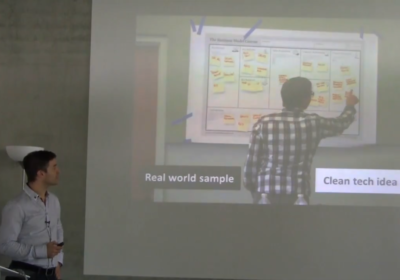
3 Lessons from my Lean Startup talk at the Wayra Academy Munich
Some days ago, I conducted a presentation on the Lean Startup Approach at the Wayra Academy in Munich to incubated startup teams, my Executive MBA alumni and some industry experts.
Three interesting questions came up:
- How to use the Lean Startup approach with bigger teams of e.g. 10 and more people involved?
- Isn’t the way you define and execute experiments the way you do it in science?
- How many people do you need to start?
#1: In order to use the lean startup approach with your team, you certainly have to make sure first that all team members are on the same page. They all need to understand and agree to why and how the approach is followed. Otherwise you always end up in long discussions about which way to go. So make sure that you set the baseline early on and inform as well as educate your fellow team members about the key principles. It might make sense to attend an event that follows those principles so that all team members even have a practical feeling of the approach. This applies to small teams and even more important bigger teams. With bigger teams you probably need a role model approach where e.g. the key team is totally aligned and informs and educate the extended team members in the area of work (e.g. customer development and product development).
#2: Absolutely. The scientific method of experimentation is the one that is used in Lean Startups. Make sure that your experiments are actionable, time-boxed, falsifiable and meaningful.
#3: Ideally you should with 2-3 people in the core team to ease feedback loops, interdisciplinary inspiration and sometimes even decision making (3 people). However, nothing speaks agains starting alone initially. You obviously will have a hard time to work on customer and product development in parallel. Yet the early stage is primarily focused on interviewing (ideally) so that you can go the first steps alone. Once you have the first result, it should be easier for you to find and attract partners as you can show your learnings from the field and progress. Remember, only validated learning is progress.
What is your point of view regarding these topics and issues?










Recent comments